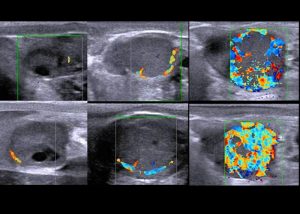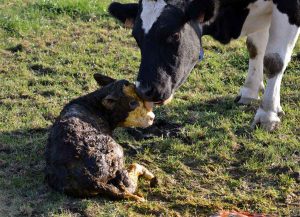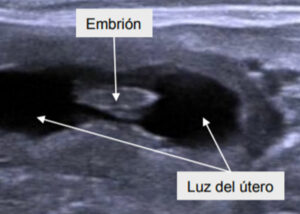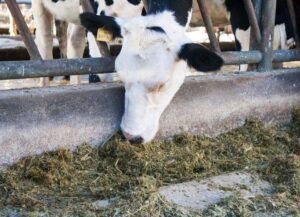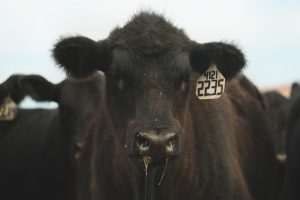María Villagrasa & Nuria Garcia
Replacement heifers are very important in the dairy industry to maintain milk production and economic performance. Thanks to sexed semen it is possible nowadays to efficiently separate the X from the Y spermatozoa, and thus produce more females.
The pregnancy rate obtained with this type of semen, however, is usually lower than with conventional semen. The reason is the result of a combination of factors such as the low volume of sperm used and changes in its viability that occurs during its handling.
A study (R.C. Chebel et al., 2020) was conducted to determine the effect of delaying artificial insemination (AI) with sexed semen in pregnancy rates of Holstein heifers. Previous research had shown that AI pregnancy rates with sexed semen increased when the insemination occurred between 20 and 40 hours after the onset of estrus compared to AI performed between 4 and 16 h after its onset.
The working hypothesis was that, because the number of viable spermatozoa is reduced in sexed semen, delaying insemination with this type of semen in relation to the onset of estrus, thus inseminating closer to ovulation, would increase the reserve of viable spermatozoa present in the oviduct to fertilize the oocyte and improve pregnancy rates.
A total of 1,207 Holstein heifers of 10.7 months of age were equipped with a collar with an automatic heat detection device. Heifers were then weighed every two weeks until they reached at least 330 kg, when they underwent an ovulation synchronization protocol. The average interval from the placement of the collars to the beginning of the synchronization protocol was 41.7 days.
The heifers were subjected to a 5-day protocol with an internal drug controlled-release device. The researchers checked the heifers in heat twice a day, at 05.00 and 15.00 h from day – 3 to 0 (72 h after the first injection of prostaglandin F2α; PGF2α). The animals were distributed in three groups: conventional semen treatment, early sexed semen and late sexed semen.
The heifers of the conventional and early treatments detected in heat at 05.00 h, were inseminated at 06.00 h on that same day, and those detected in heat at 15.00 h were inseminated at 16.00 h on the same day. The late treatment heifers detected in heat at 05.00 h were inseminated at 4pm on the same day and those detected in heat at 3pm were inseminated at 06.00 the next day. All heifers not detected in heat received an injection of gonadotropin-releasing hormone (GnRH) at 05.00 am on day 0 and were inseminated at fixed time at 06.00 h (conventional and early conventional treatments) and at 16.00 h (late treatment) on the same day.
Heifers inseminated while in heat did not receive the last injection of GnRH. After the first insemination, heifers were re-inseminated upon detecting they were in heat. A total of 1,096 heifers were detected in heat using the automatic detection device 24 days before the start of the ovulation synchronization protocol.
Delayed artificial insemination did not improve pregnancy rate
Due to the design of the experiment, the heifers of conventional and early treatments had a shorter interval from the onset of heat to AI and from GnRH injection to AI. Among the heifers detected in estrus, the interval ranges from the beginning of the heat to AI were 3.6 to 28.5 h, from 0.0 to 25.5 h, and from 9.4 to 36.8 h for conventional, early and late treatments, respectively.
Among the heifers inseminated at fixed time, the interval ranges from GnRH injection to AI were 0 h for heifers from conventional and early treatments, an 8.5 to 11.7 h for heifers in the late treatment. This wide range of intervals from the onset of heat to AI may have affected the ability to properly test whether delaying AI by 12 hours would improve the pregnancy rate per AI.
The percentage of heifers that were diagnosed as pregnant at 30 and 62 days after AI was higher for conventional treatment heifers compared to the other two treatments. Treatment did not affect the loss of pregnancy from day 30 to 62 after first AI and from day 62 after the first AI until calving.
Among the heifers that conceived and gave birth to the first AI, treatment did not affect the percentage of stillbirths and twins, but a higher percentage of heifers from early and late treatments gave birth to female calves alive (conventional 41.7%; early 89.2%; late 88.9%) and, on the contrary, a higher percentage of heifers from conventional treatment had a live male calf (conventional 48.9%; early 5.4%; late 4.9%).
Differences in profitability between treatments
From an economic standpoint, although pregnancy rate per AI was lower for sexed semen treatments, the differences in profitability between treatments were small or none, because the interval between the start of the study and calving was not different between treatments and because the sexed semen treatments produced a greater number of live female calves.
The management strategy proposed in the experiment to improve the pregnancy rate of inseminated heifers with sexed semen, that is to delay insemination by approximately 12 h, did not improve that rate. The authors believe this was because the range of intervals from the onset of heat to AI in treatments was too broad, limiting the ability to properly test whether there were differences between treatments.
Reference
Ricardo C. Chebel and Thiago Cunha. 2020. Optimization of timing of insemination of dairy heifers inseminated with sex-sorted semen. J. Dairy Sci. 103:5591–5603.
© 2021 Dellait Knowledge Center. All Rights Reserved.



